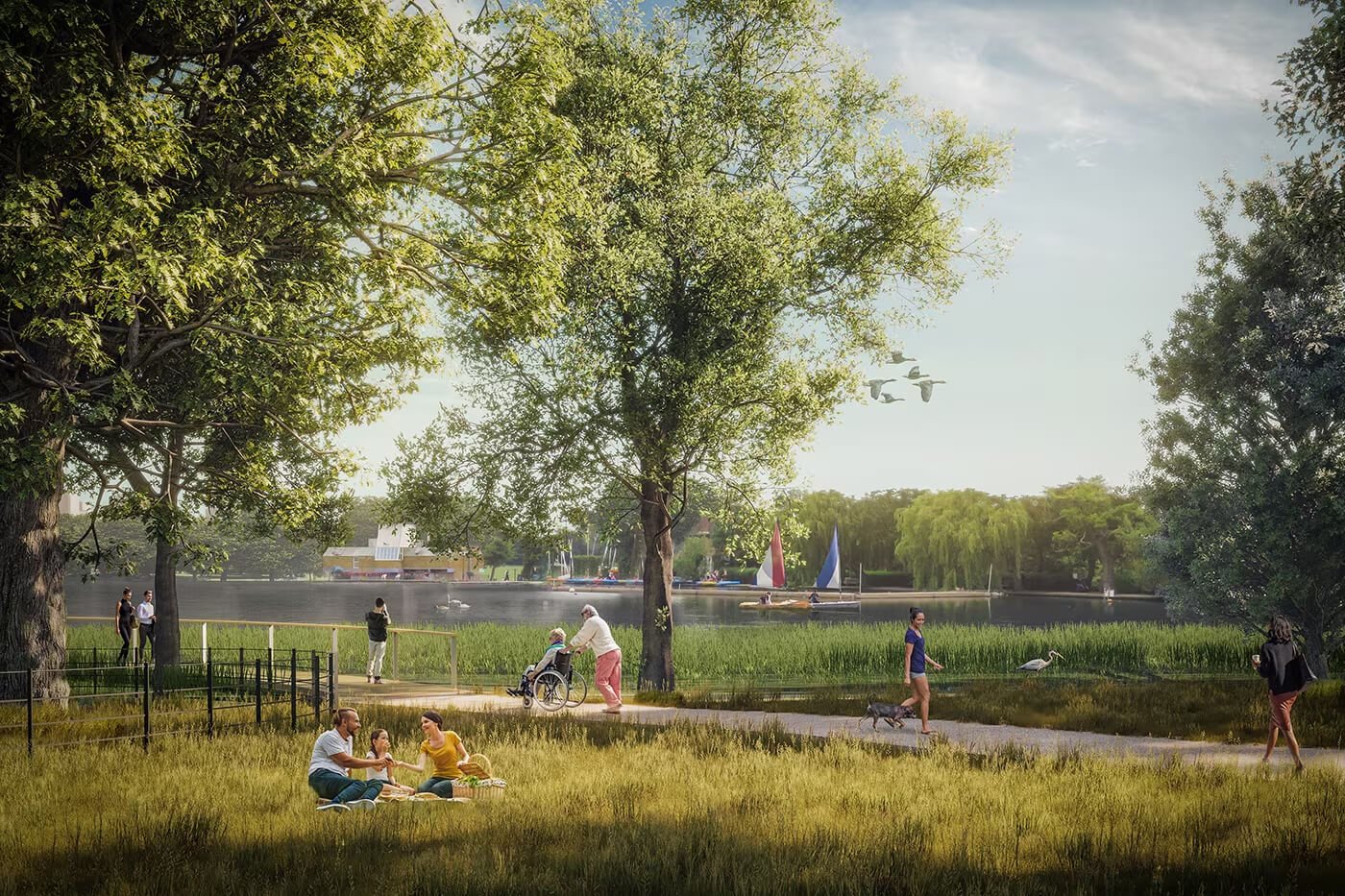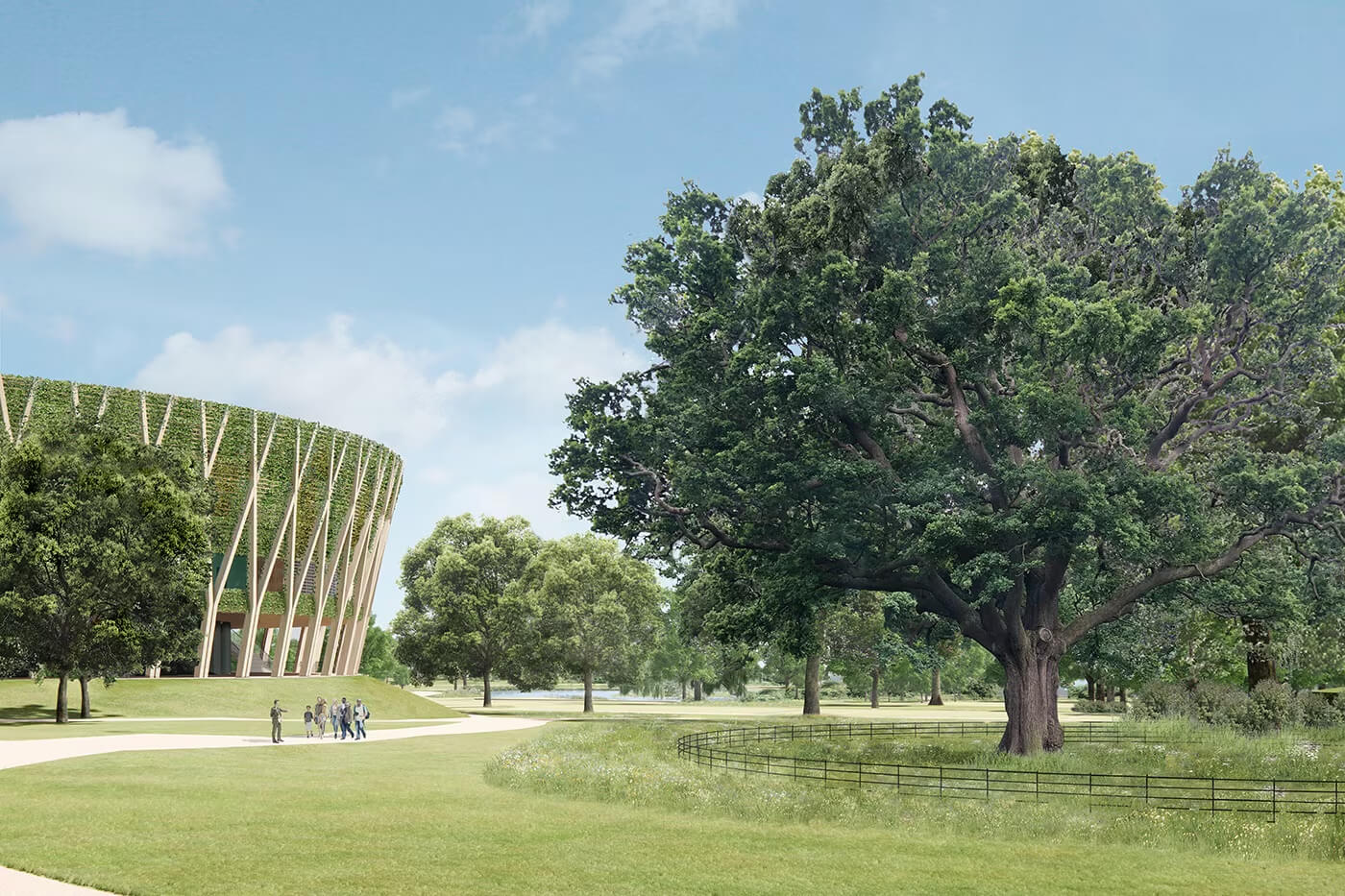As tennis surges in popularity in the U.S., across the pond, the trend persists. The oldest of the four Grand Slam tournaments, Wimbledon, is steeped in an air of prestige and tradition, making it a coveted event for athletes and audiences alike. For spectators, the lawn party atmosphere washed with Pimm’s Cup and strawberries and cream is a prime aesthetic, but it wants more.
As with tradition, change takes time, but as Wimbledon’s counterparts in Melbourne, Paris, and New York continue to grow, major redevelopment is still a ways off for the All England Lawn Tennis and Croquet Club (AELTC). A golf course immediately west of the grounds is the perfect solution to its growing desire to expand—but it isn’t all aces. Two active cases have been brought to London’s High Court as part of a tug-of-war between the tennis club and local campaign group Save Wimbledon Park (SWP), who oppose the proposed plan.
The Qualifying Factor
Unlike the other Majors, qualifying rounds at Wimbledon are held miles offsite at Roehampton. In an exhibition of the proposals produced by the AELTC, the inability to host its Qualifying event was cited as one of the tournament’s weaknesses. And in terms of practice facilities, Wimbledon lags behind the rest.
The AELTC’s proposal would nearly triple its current footprint, improving the tennis facilities, restoring the property’s lake, and creating a 230-acre park. For players fighting for a chance at the coveted title, the plan would see the addition of 39 new grass tennis courts, including a third show court that could seat 8,000 people. New public space would also improve foot traffic and get more people on the lawn, however, the plan caused quite a racket, and as it faces intense scrutiny the future is unclear.
Whose Lawn Is It, Anyway?
The Wimbledon Park Golf Club served the area for 120 years before it was acquired by AELTC in 2018. But originally, the course was a pastoral parkland tailored by landscape architect Lancelot “Capability” Brown. The remnants of Brown’s work received designation from Historic England, with half the designated land on the golf course, and the other on the public Wimbledon Park owned by the town council. This places the site, rather than the expansion itself, at the center of the current battle.
Those against the expansion plan posit that it puts the heritage site—which mostly comprises a manmade lake in its grassland setting, old woodlands, veteran trees, and the historic views—at risk. However, the masterplan by Allies and Morrison included in the AELTC’s exhibition detail the rehabilitation of Brown’s lake, along with other heritage features.
According to a Facebook video posted by Wimbledon, 41 veteran trees exist on the site and will be protected during construction. Additionally, though 300 trees will be lost during removal, the retention and replanting of trees is a part of the plan, which doubles the current 1,200 trees.

“The landscape proposals reflect the spirit of the Capability Brown design in form and appearance, but look to recreate the site as 21st century parkland,” the AELTC shared on its website. “The removal of the golf infrastructure of fairways, bunkers, greens and tees (all part of the existing heavily managed landscape), will restore the landscape’s open and more naturalistic character. It will also reveal some of the historic views both into and across the site which have been lost under the golf course template.”
The First Serve
The site straddles two separate London boroughs, so the AELTC submitted proposals to both. In October 2023, the Merton Council approved the application for expansion, but it was denied by Wandsworth Council a month later. During this time, SWP began lobbying against the proposals, and since then the rally has intensified.
The application was brought to and subsequently approved by the Greater London Authority (GLA), and the match seemed over. However, the SWP raised funds to bring a Judicial Review to the High Court, challenging GLA’s ruling.
SWP argues that a covenant signed when All England Lawn first took ownership of the golf course wasn’t properly considered in the GLA’s decision. According to a 1993 agreement, the land is not to be used for anything other than leisure or recreational purposes (or as open space).
Wimbledon, though a private event, functionally doesn’t restrict public access any more than the preexisting golf club, where membership was required to access the property. To this extent, the AELTC believes not only that it increases public access, but that the covenant doesn’t apply to its circumstances. To reaffirm its stance, the tennis club has requested a covenant test, scheduled for January 2026, with hopes of proving that the covenant doesn’t restrict the club’s ability to expand.
Courtside Commentary
As matches were being held on court, at the High Court, about 100 campaigners for Save Wimbledon Park stood outside during this week’s Judicial Review to show their support. Banners, signs, and pamphlets were on display encouraging bystanders to “Love Tennis, Hate Concrete,” underscoring a deeper message.

The case against expansion points to issues of trust, as campaigners can’t be sure that the tennis club is acting in the best interest of the people and the environment. A decade-long construction timeline is daunting, and the charming neighborhood feels at risk. Despite criticism, however, there’s still merit to the expansion of the grounds. The queue process for ticketing is extensive, and social media posts indicate the crowds are getting harder to navigate as the tournament gains momentum.
“We all love the Wimbledon championships but don’t believe the proposal is really about protecting the future of the world’s best tennis tournament,” Christopher Coombe, a director of SWP shared in a press release. “We will continue to press AELTC to reconsider their fighting stance towards our community and to join us in finding a resolution that we can all get behind.”
Though the hearing concluded on July 9, a decision has not yet been made.
→ Continue reading at The Architect's Newspaper
